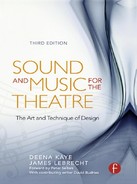Foreword
We can shut our eyes, but we can still hear. We can shut our ears, but sound is still echoing inside our skulls. We exist in a universe of sound. In the beginning was the Word, and before the Word was written, it was spoken, and its sound keeps speaking in our minds and our hearts, and we can’t stop listening.
There are many voices. Mostly we live inside a cacophony, a mélange of whispers and shouts, of traffic congestion and bird song, appliance hum, exhaust fans, television, radio, alarm sirens, and angelic voices speaking softly in our inner ear.
In tandem with the related sense of smell, hearing is that sense that is most deeply associated with memory. Sound evokes place, not space. That is to say, sound is where we locate ourselves, not physically, but mentally and spiritually. Sound exists inside our heads. It is our greatest experience of intimacy. It transports us, it invades us.
When we speak of atmosphere—a productive atmosphere, a peaceful atmosphere—again and again, it turns out that our emotional well-being is attached to a quality of sound. Is it an accident that our sense of balance is located in our ears?
Sound speaks to us of immaterial things: we can’t touch it and we can’t describe it in words. Sound evokes that part of our lives and that part of our experience that cannot be controlled by or reduced to verbal explanations. Sound evokes that part of our lives that is intuitive, that part of ourselves that can never be compromised, a world of pure feeling, being, and unmediated experience.
Sound is something that we take personally. In recent years, the science of sound has developed a new field called, appropriately enough, psychoacoustics, which operates within the related field of psychophysics. Why does one person speak loudly and another speak softly? We are all differently calibrated. These are not just different levels of experience, different intensities of being. These are not just physical facts; they are character traits that have evolved across lifetimes of moral choices and environmental influences. The sound that we produce, and our responses to the sound around us, operate in a complex equilibrium determined by the ongoing nature of contrast in our lives and what we happen to be going through that day.
Very late in our day, the technology has become available to allow sound to begin to occupy the place in theatre arts that it occupies in our lives. This technology is still evolving, and as it does, the nature of theatre itself will be transformed. This revolution is comparable to the revolution in lighting that transformed theatre in the late-nineteenth century. We are in a position to completely reorient the relationship between performer and audience, to transform a theatrical space, to create distance or sudden proximity, to create a densely populated zone or an endless arid expanse. We are in a position to evoke simultaneous layers of experience: flashbacks, premonitions, visitations, inner voices, the mind wandering or becoming suddenly, unbearably concentrated.
We are beyond the era of sound “effects.” Sound is no longer an effect, an extra, a garni supplied from time to time to mask a scene change or ease a transition. We are beyond the era of door buzzers and thunderclaps. Or rather, door buzzers and thunderclaps are no longer isolated effects, but part of a total program of sound that speaks to theatre as ontology. Sound is the holistic process and program that binds our multifarious experience of the world. Sound is our own inner continuity track. It is also our primary outward gesture to the world, our first and best chance to communicate with others, to become part of a larger rhythm.
I like to think that the microphone has come to occupy the place in contemporary theatre that the mask occupied in the theatre of ancient Greece. It is a device that creates both intimacy and distance, it conceals and it projects, it acts as a shield and as a medium of relentless exposure. The chosen instrument of politicians and news-casters, it creates power. It fills a vacuum while creating another vacuum: that is to say, it dominates physical and emotional space while at the same time creating a certain inevitable hollowness.
Our tragedy is accompanied by new technology; so, too, will be our salvation. Our last judgment will take place to a different set of trumpets and drums. Like light, sound is frequently used in world religions as a metaphor for salvation. It is time for artists working in sound and in light not to be second-class citizens in the theatre, not to be afterthoughts, not to be utilitarian drudges, but to assume that place of inspiration and centrality that their medium demands. Sound and light are not metaphors for salvation—they are first steps on the pathway to salvation itself, the first glimmers, the first inklings of a new world. The day of judgment comes hourly for each of us. The question for the next generation of theatre artists will be: When that moment comes—as the visible world melts away—what will that trumpet sound like?
Peter Sellars
March 1992
